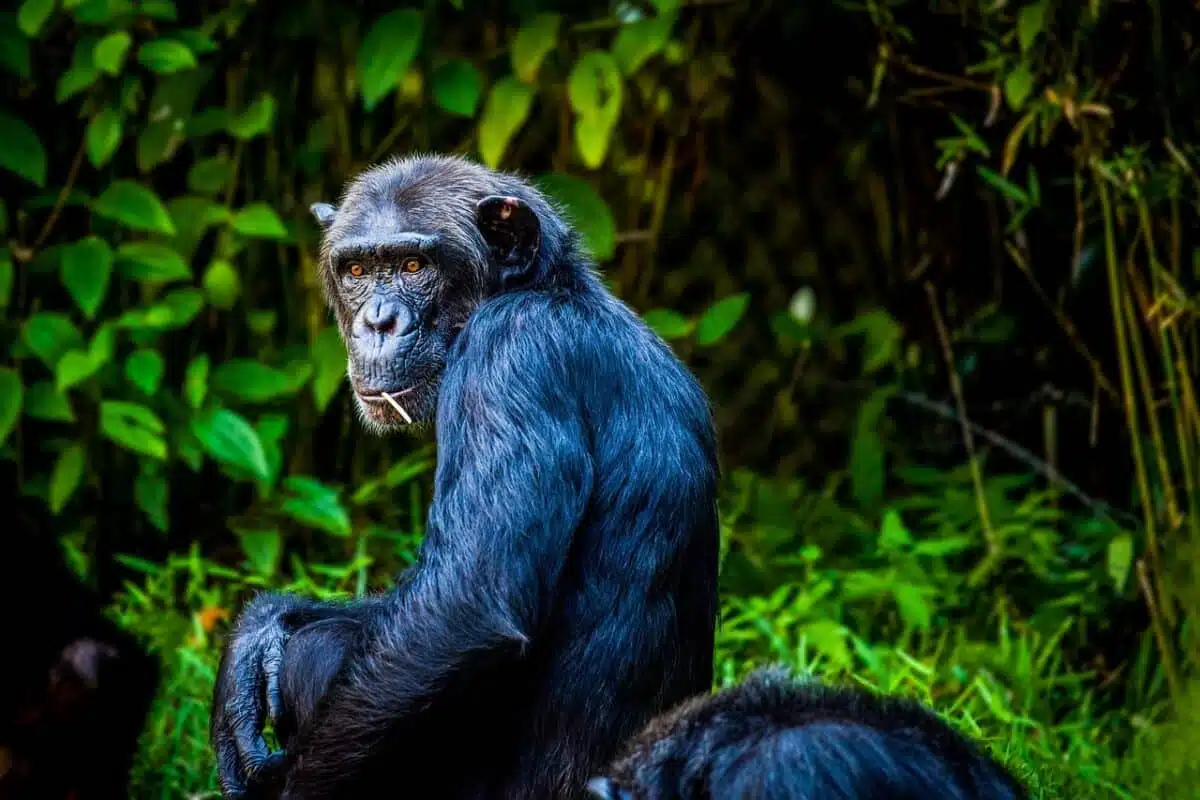For those with a passion for wildlife, the enigmatic Bondo Apes, also known as Bili Apes, offer a captivating mystery. These elusive creatures have remained a source of intrigue for several reasons, with some even doubting their existence.
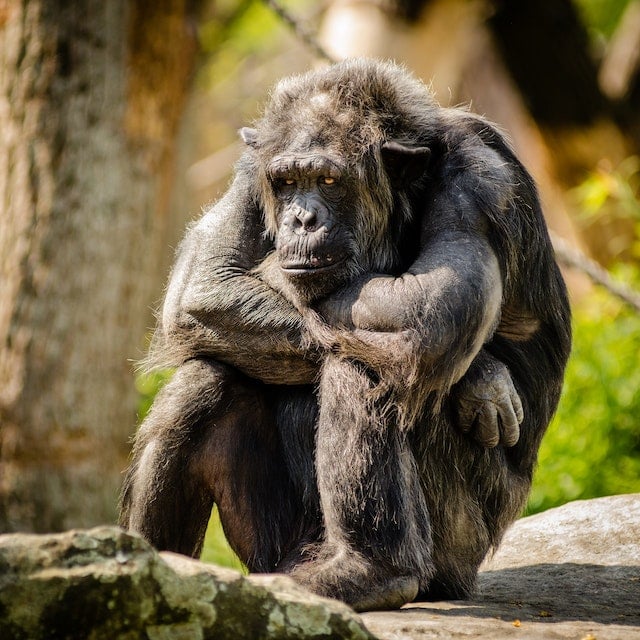
These remarkable apes inhabit the Bili Forest in the Democratic Republic of the Congo and were officially acknowledged by science in 1996. However, encountering them in front of a camera lens or by avid wildlife enthusiasts is a rare occurrence.
Rest assured, these apes are very much real and rank among the most intriguing chimpanzee species waiting to be explored. In this article, we’ll delve into the fascinating world of these creatures, sharing insights about their unique characteristics and behaviors. Let’s embark on this journey to uncover their secrets.
Feel free to read the entire article or navigate to your preferred section below.
What Is Bondo Ape?
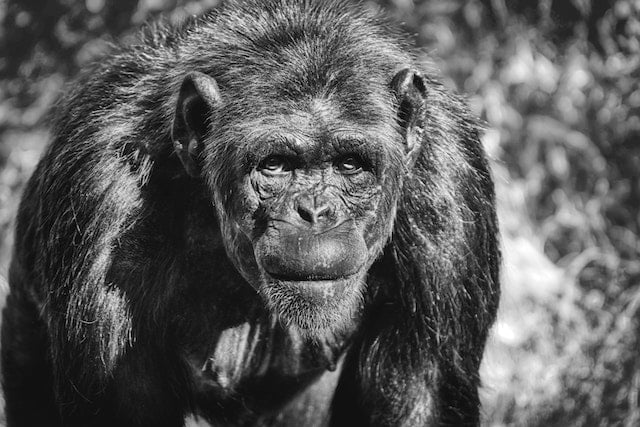
Bondo Apes are subspecies that belong to the Chimpanzee family or maybe a cross between gorilla and chimpanzee. They are well-known to be one of the strongest animals and can kill various predators in the blink of an eye.
When you search anything about Bili Apes or Bondo Apes, the thing that appears quickly is the title they have: “Lion killers.” There is an impression that Bondo Apes are strong enough that they can kill big cats and various other animals without hesitation.
However, the fact that they hide from the camera and they had been a mystery for a long time shows they do not like to be disturbed. Also, they do not attack or harm anyone until you provoke them or they feel endangered.
History Of Bondo Ape
Formerly known as Pygmy chimpanzees, Bondo Apes, or bilis, gained recognition as a separate species in 1933, distinguishing themselves from their chimpanzee relatives. These diminutive apes have since carved out their distinct identity.
In terms of size, bilis are similar to chimpanzees, with males tipping the scales at approximately 86 pounds, while females weigh in at around 65 pounds. Both sexes reach a height of 115 cm. However, unlike chimpanzees, bilis engage in interactions and grooming sessions with monkeys instead of pursuing them as prey.
Notably, bilis have never exhibited behaviors like infanticide, cannibalism, or aggressive territorial incursions often observed in their chimpanzee counterparts.
Why Are They Called Mystery Apes?
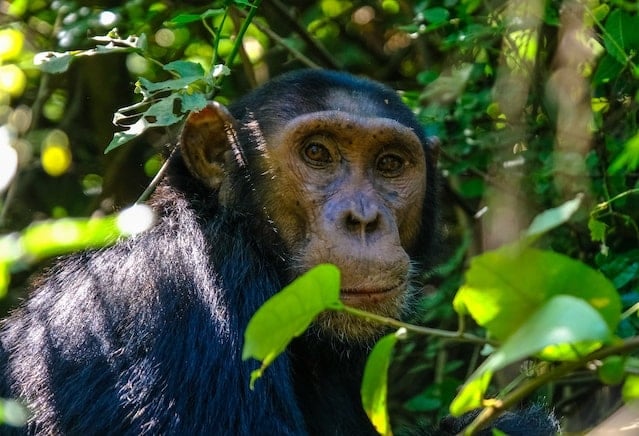
The mythical cryptid was discovered to be a real mammal in 1996 and exhibits traits of chimpanzees and gorillas. The “Bondo mystery apes” were named in 2003 in sensational media reports to a reportedly new species that was said to live in the wetlands and grasslands near Bili.
Cleve Hicks of the University of Amsterdam has spent 18 months studying the Bili apes, giving him the most in-depth and current expertise. One of his trackers had been hearing chimps calling from the same location for several days when his team made their most significant find.
All About Bondo Ape
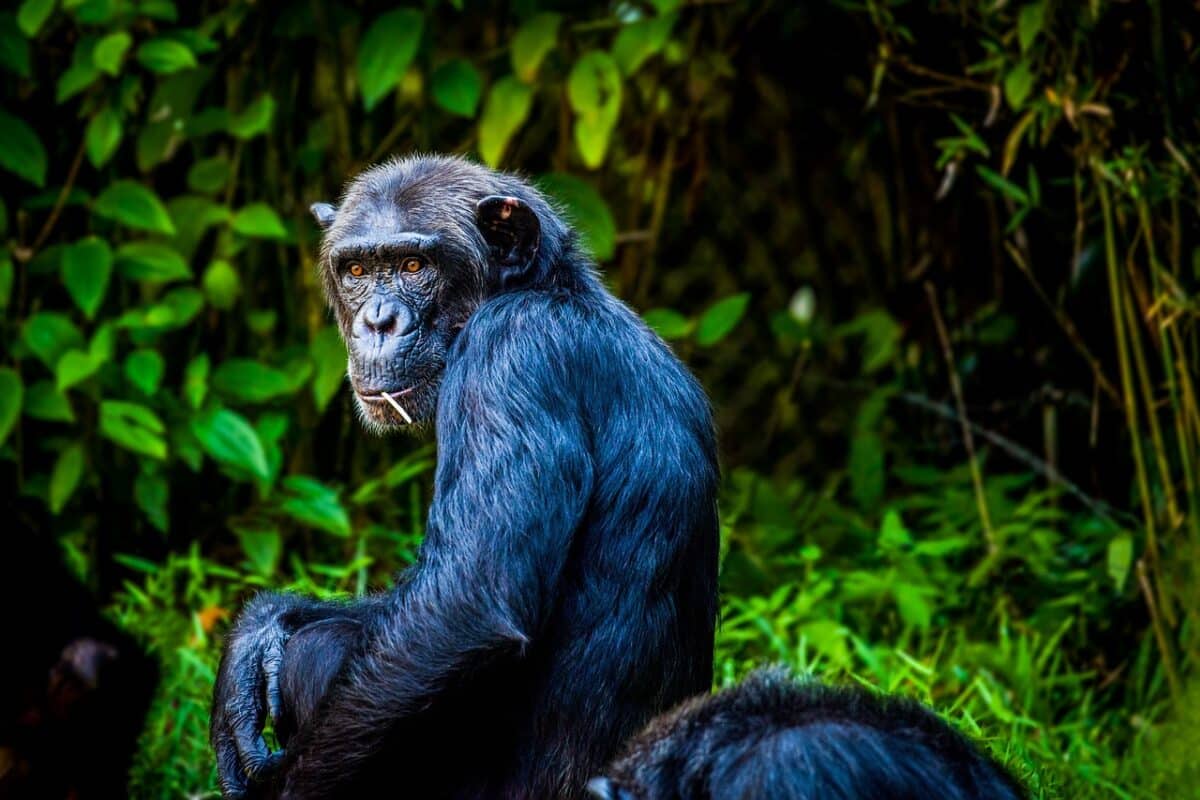
The genetic analysis of Bondo Apes’ non-nuclear DNA in 2003 has revealed that they are common chimpanzees. They belong to the eastern chimpanzee subspecies and have a diet and physical characteristics similar to chimpanzees.
· Physical Appearance
They have a flat face and straight brow-ridge when talking about physical appearance. When they start aging, the hair on the whole body turns gray all at once. They start turning old at an early age as compared to other chimpanzee species.
The stature of bilis is similar to that of chimpanzees, although they have leaner bodies, smaller, rounded shoulders, and big legs. Moreover, one of the distinctive skull types is discovered in Bondo Apes; they possess a sagittal crest.
Also, the skulls of four out of the five Bili Apes measured greater than 220 millimeters, which is much above the limit of the chimpanzee range.
· Habitat
These apes are exclusively found in the forests south of the Congo River. They make ground habitats like gorillas, utilizing interlaced branches or saplings crouched down into a central basin. They commonly live in the trees as well.
Ground nests are frequently discovered next to or under tree nests. For food, they hunt for fruit in the forest canopy and on the ground, where they hunt for invertebrates.
· Behavior
Bondos are renowned for frequently engaging in copulation to settle disputes and soothe worried family members. They are also ready to share food with bilis they don’t know as well as their friends.
Also, Bondo Apes are fission-fusion communities, just like chimpanzees, which means that smaller “parties” will separate from the main group to hunt somewhere for the day, causing the membership of groups to alter frequently.
Even though they avoid the camera, they seem to have a curious nature. It has been observed that when these chimps find people around, they don’t just approach them; but circle them out of pure curiosity. They would stand face to face and exchange longing glances before silently slipping away.
· Reproduction
Bilis have nearly the same fertility rate as chimps, having a baby every five years. Females typically give birth to their first child after an approximately eight-month gestation period once they are nearly 14 years old.
They tend to care for their babies until they’re nearly four years old. Bili female youngsters often leave their troop to join another after checking out various groups before picking one to stay with. However, males live their entire lives with their mothers.
Males start puberty at roughly eight years old, and their females are about five years old. Females take most of the parental chores, although males assist the group by bringing food and safety to their young.
· Conserving
War and civil instability in the Republic Of Congo in the 1990s and 2000s, deforestation, and agribusiness have ruined and dispersed most of the chimp habitat. There are several caged bilis that survive in zoos and some other facilities worldwide.
Even though hunting or killing bilis is forbidden, the apes are poached for bushmeat, another reason for their decline. But numerous initiatives are underway to rescue the species to preserve this endangered species.
Amazing Facts About Bondo Apes
Since Bondos have been accepted to have their identity as Primate, they are packed with some amazing and fun characteristics. Let’s find out the amazing facts about these creatures.
1. Active During Daytime
The daytime activity of bilis knuckle-walking when they are on all fours. The only tools they utilize in the wild are leaf coverings and branch tugging during intimidation shows. They create their beds out of leafy branches.
2. Female Raises Their Young
The female is responsible for raising her young alone. The link between young bilis and their mothers is extraordinarily strong; if they are removed too soon, there is a significant danger that the young will commit suicide.
3. Self-Medication
Bilis is known to be pretty smart and practices various traits humans follow. They are amazing in self-medication, as they are pretty smart at finding the relevant herbs to treat the illness and wounds.
When someone in their family is ill and can’t find a specific herb to treat, they can blend different plants to make potent cures.
One of humanity’s closest relatives is the bili. According to a genetic study, the line originated with modern humans. Our DNA is shared with bilis by 98.7%. Genetically, they are more similar to humans than gorillas. They are also the nearest primate relatives to us.
5. Females Help Other Females When Giving Birth
It has been seen that female bilis assist other females in giving birth. Similar to human birth, the birth of a bili is a social occasion attended by female attendants who offer support and protection.
The ability of relative females to establish close friendships and work together might have been an evolutionary prerequisite for developing human midwifery.
6. Bondos Are Not Predators
When they eat, males groom and share food with other men the least, whilst females groom and share food with other females most of the time.
7. Females Are Dominating
Female bilis rule social groups as the dominant species. They occasionally create coalitions with one another to dominate particular males as part of this crucial job. Each community comprises “parties,” foraging groups of 7 to 16 individuals.
However, their composition is always shifting. Most bili communities are centered on females and their offspring, and males often follow the example set by more experienced females.
8. Travel In Groups
Typically, 3 to 6 bilis travel and eat together in groups, although there might be as many as 10. They are gregarious animals that move in mixed-gender herds, including both parents and young.
These creatures occasionally congregate in larger groups across their area when food is abundant but then break up into tiny groups when they move on.
9. Diet
Bondo Apes eat fruits, nuts, shoots, piths, leaves, flowers, stems, etc. They occasionally consume mushrooms, and a minor diet consists of invertebrates, including termites, worms, and grubs. Additionally, they might eat bats, duiker, and flying squirrels.
10. Mating
Bondo Apes are bi-sexual whether we talk about males or females. Also, they have no set season for mating. When two or more males mate with two or more females, bilis become polygynandrous.
11. Bondo Apes Are Sensitive
Bilis appear as clever as chimpanzees, yet they are far more sensitive.
12. Playful Nature
When playing, bilis are creative and have been observed concealing their eyes with a banana leaf, arm, or two fingers. As a result, they are disabled and stutter around on a climbing frame, running into people or almost falling.
The lively and amusing bilis like pulling a funny face sometimes while performing lengthy solo pantomimes and other times while teasing one another.
13. Sleeping Habits
Although many of the Bili apes appear to prefer ground-level dormitory housing, apes are typically found sleeping in nests built within the branches of bushes.
The reason behind sleeping in the boundary of bushes is taking a preventative measure against being attacked on the ground during the night by something with dangerously large teeth and sharp claws.
Bondos Are Endangered
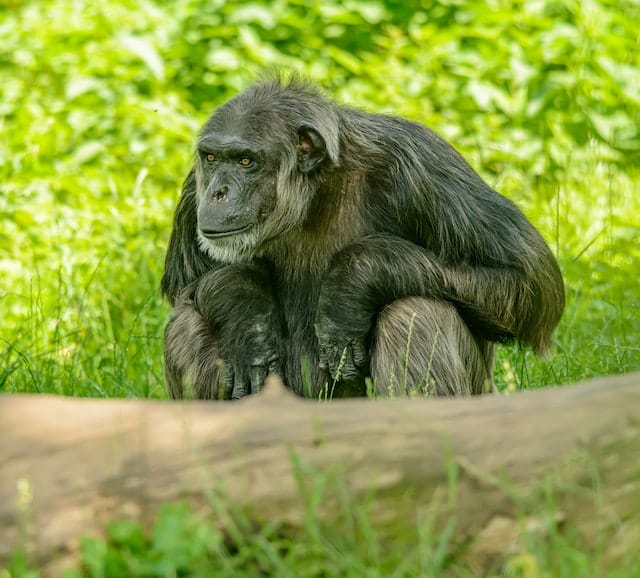
Bondos are endangered because of human-caused forest devastation and illicit bilis meat harvesting; fewer bilis are left in the wild. The amount of bilis killed while hunting is disturbing and causing the species to be considered endangered.
Additionally, people keep young bilis as pets until they pass away from neglect. Sometimes it takes killing four to five adults to get one little bili. According to IUCN, the International Union for Conservation of Nature, they are considered Endangered.
Threats To Bondo Apes Survival
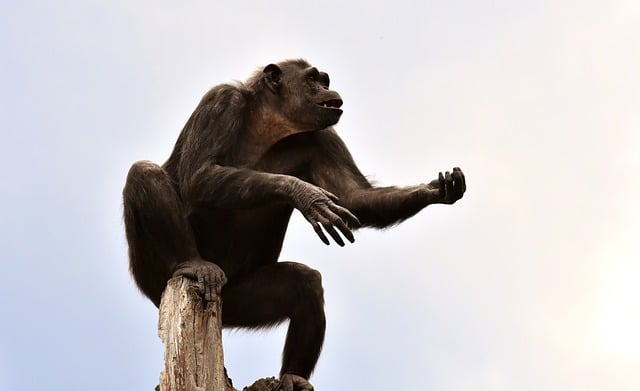
There are between 10,000 and 50,000 survivors spread out across the entire world. The main threats to Bondos survival are;
· Disease
An issue that might lead to eradicating some populations is the spread of disease. Diseases brought on by viruses, germs, and parasites spread quickly in areas where habitat coexists with increased human densities.
There have been reports of infectious diseases in bilis, including those caused by both human-borne and natural pathogens.
· Habitat Loss
There are extremely few protected places for Bondos to survive and repopulate undisturbed by deforestation and fragmentation. Global Forest Watch estimates that the Democratic Republic of the Congo lost a staggering 8.6% of its whole tree cover.
A large portion of the forest degradation in bili habitats can be linked to urbanization and the conversion of agriculture between 2001 and 2021.
· Logging
Logging has a significant role in the devastation and degradation of the bili habitat. It keeps the bushmeat trade going by allowing hunters to reach previously unreachable tropical forests via logging roads.
Despite a government ban on commercial logging contracts in the Congo, legal and illicit logging are still taking place.
· Poaching
The most significant threat to bilis throughout their habitat is commercial poaching. Despite being a completely protected species under DRC legislation, bilis are still slaughtered, trafficked, and eaten in many regions of their range.
In many places, traditional taboos that safeguarded bilis disappeared due to economic hardship and pressure from a growing human population.
Why Are They Called Lion Killers?
Even though Bondo Apes are known as lion killers, there is no solid evidence. When it comes to eating flesh, they have only been observed eating fish from the river or invertebrates. So, this theory of eating big cats is not valid.
According to local tradition, the Bondo ape is said to be able to chase and kill other huge African predators, including leopards, lions, buffalo, and elephants. Scientists still need to record this hunting behavior.
But the data points to the possibility that the legends are accurate. The University of Amsterdam’s Cleve Hicks and his study group were able to watch five of these gorillas feasting on a dead leopard.
Despite not witnessing the Leopard’s demise, they warned that the apes might have come across its corpse after it passed. However, the incident of finding Billi Apes sitting around a leopard flesh, feasting on that, has made them known as Lion killers.
The Final Word on Bondo Apes
The Bondo Apes are odd-behaving animal that primarily eats fruits and vegetables, although rumor is that they have been observed killing lions. They are also not known to be the least aggressive toward people, which proves that the Lion killer theory is weak.
A group of humans can often be observed to be charged and attacked by a common gorilla; however, the Bili ape has been seen approaching people without any hostility or fear, just a slight awareness of a similar creature.
Most of their diet consists of fruits, stems, and tree leaves; however, they have also been observed feasting on small animals and insects. They also go to the water in a river to catch fish and other aquatic species.
Also, have a look at our Chimpanzee or Primate Articles.
- Explore The Azores - April 22, 2024
- The 4 Best Places to See Jaguars - April 19, 2024
- Wildlife of Sweden - April 19, 2024

